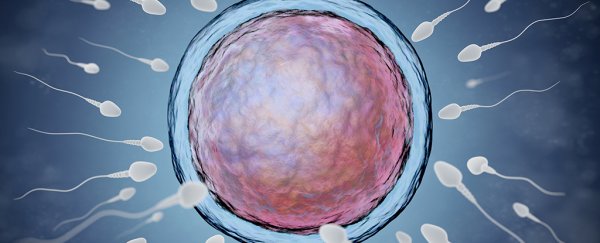Researchers have made a discovery that could lead to better birth control measures for both men and women: a biological on/off switch that controls the movement of sperm. As well as helping couples avoid unwanted pregnancies, the new findings could also help improve fertility rates for those struggling to conceive.
As Gizmodo reports, the protein at the centre of the new study is the little-known ABHD2. Experiments carried out by teams at UC Berkeley and Yale University show that this protein is required for the biological processes that cause sperm to become more energetic swimmers.
Ordinarily, the ova puts out a hormone called progesterone to encourage a sperm race, and the progesterone is triggered by the opening of a calcium channel called CatSper. And now it seems that ABHD2 sits between the progesterone and the CatSper in this biological chain of events.
This means that ABHD2 is essential in getting the progesterone to react with CatSper and cause the sperm tails to kick into a frenzy. Without that reaction, the sperm just drift along as normal.
It's an important internal mechanism – after all, you don't want sperm sprinting towards an egg prematurely and running out of energy before they get there. "This gives us an understanding of another pathway that is involved in human sperm activity," said one of the team, Melissa Miller from UC Berkeley.
If ABHD2 can somehow be inhibited, it could pave the way for an effective contraceptive drug for both men and women.
"What's really cool is that we have an actual target for unisex contraceptive development. If you can stop progesterone from inducing a power stroke, sperm are not going to be able to reach or penetrate the oocyte," says Miller.
"People tend to think of fertilisation as like a marathon, where the fastest, most powerful sperm is going to win," she added. "We think of it like the Tour de France, where the riders in front are blocking the wind for the actual winner. Fertilisation is a team sport, where the first sperm clear the way, expending their energy to break through the barrier cells, so that the slow and steady guy can get into the oocyte."
The research has also cast new light on a long-standing mystery surrounding the performance of steroids like progesterone: specifically, why the reactions they produce can take days or happen instantly.
As scientists begin to understand more about steroid signalling in sperm, the team says, it could help inform research into many other types of cells too.
The research has been published in the journal Science.
